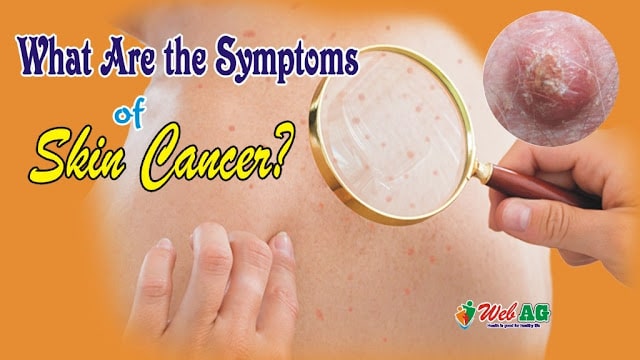Cancer is a disease that affects many people each passing year, and one of its most silent forms is skin cancer. Skin cancer occurs due to abnormal growth of the skin cells, causing several types of cancer. It's tough to find someone with no marks on their skin. Most people have many birthmarks since they are a genetic factor, but these marks can also appear due to sun exposure. Sometimes, these spots can get darker and even increase in size over the years.
When should we worry about them? Certainly, at some point in your life, you must have noticed a new spot on your skin, or maybe an old one whose shape changed over the years. Is there a risk of it being a signal of cancer? We will talk about this in today's article. What are the symptoms of skin cancer? Well, most times we have birthmarks, present on our skin since our birth.
Skin Cancer Symptoms
Only 1% of people who have birthmarks are at risk of having skin cancer. On the other side, we have all the marks and spots acquired during our childhood and early adult life. They are caused by sun exposure and many times aren't a problem, except for the aesthetics! Lastly, we present the atypical marks, which are irregular in their shapes and coloration.
Their borders can be lighter or reddish, and they present irregularities or black spots around the borders. These are the marks that need a dermatologist's analysis and medical monitoring. To identify marks that may indicate the development of skin cancer, there is an exam called ABCD. Observe the following characteristics:
Their borders can be lighter or reddish, and they present irregularities or black spots around the borders. These are the marks that need a dermatologist's analysis and medical monitoring. To identify marks that may indicate the development of skin cancer, there is an exam called ABCD. Observe the following characteristics:
Asymmetry
If one half of the mark is different from the other, it may be indicative of cancer;
Border
The borders aren't smooth and regular;
Color
The mark has different colors, such as black, brown, and red;Diameter
The mark is bigger than ¼ inch (6mm). The best way to identify any alterations is to observe your whole body in front of a mirror, including your back, face, head, hands, and feet. Another option is to ask someone to observe your body and monitor its evolution as the years go by. You must pay attention to the characteristics shown in the ABCD test, as well as wounds that don't heal after 1 month.
When you go to a dermatologist, ask them to analyze any marks that you worry about. This way, the doctor can collect some tissue to request a biopsy, if necessary. If there isn't anything suspicious, you can keep doing an annual follow-up, especially if you have any risk factors or a family history of the disease.
When you go to a dermatologist, ask them to analyze any marks that you worry about. This way, the doctor can collect some tissue to request a biopsy, if necessary. If there isn't anything suspicious, you can keep doing an annual follow-up, especially if you have any risk factors or a family history of the disease.




.png)













